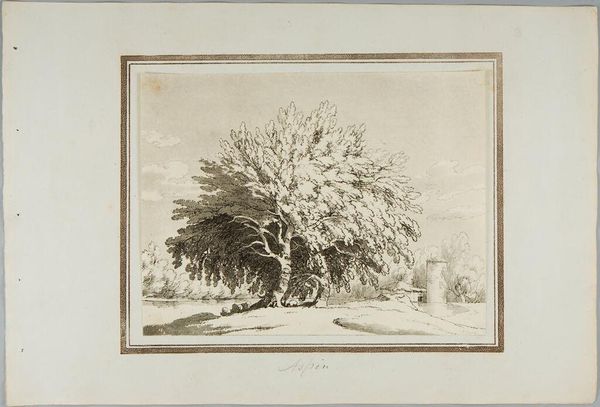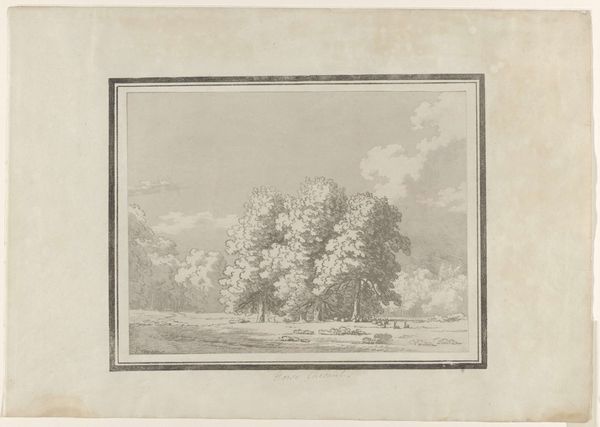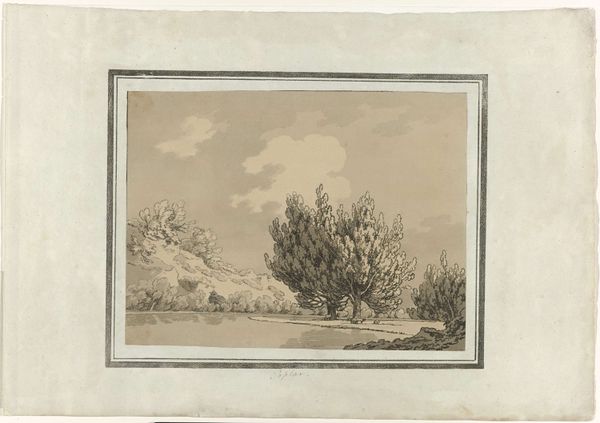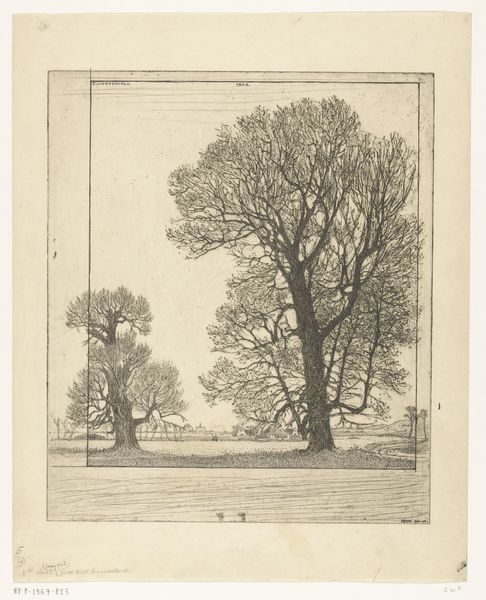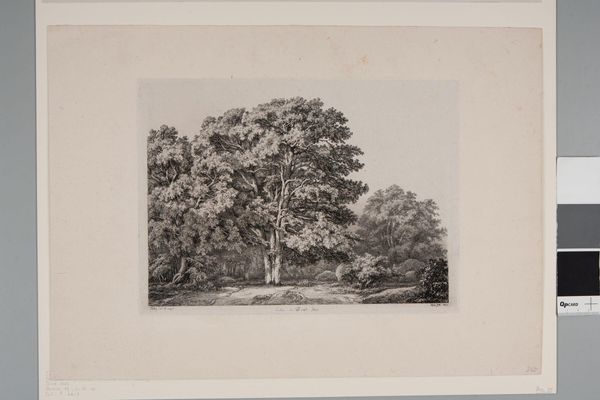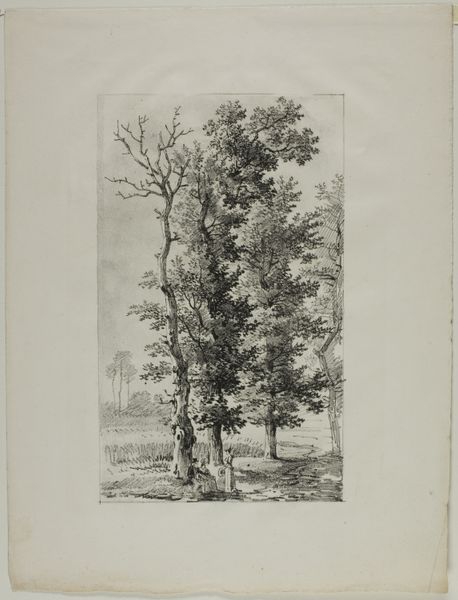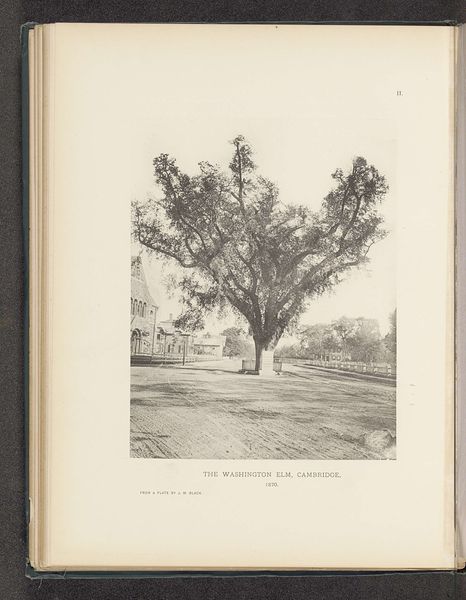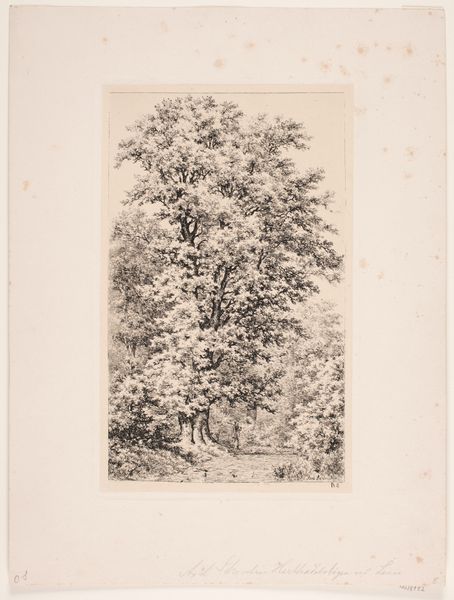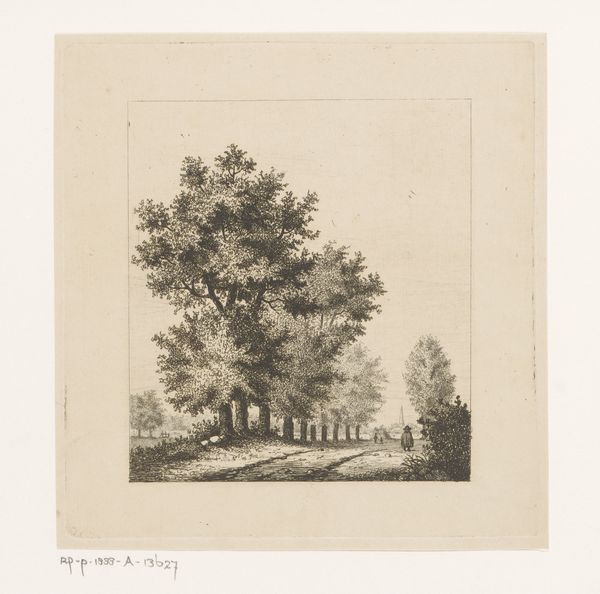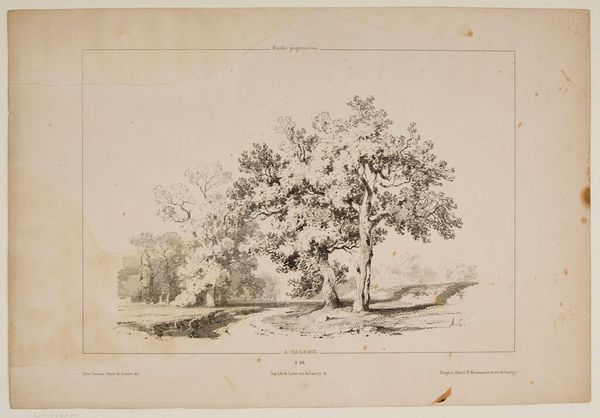
drawing, graphite
#
drawing
#
landscape
#
romanticism
#
graphite
Dimensions: height 239 mm, width 315 mm
Copyright: Rijks Museum: Open Domain
Curator: I'm struck by the stark contrast in this landscape by John Robert Cozens, completed in 1789. The work is simply titled "Aspin," rendered meticulously in graphite. What's your initial take? Editor: A certain melancholy stillness emanates from this image. The single tree dominates the scene, almost as if bearing witness to something lost. It feels rather monumental for such a simple drawing. Curator: Absolutely. Cozens' landscapes are less about topographical accuracy and more about conveying a feeling. The placement of the tree, the deliberate use of light and shadow... it all evokes a specific emotional response tied to the romantic ideals of nature during the time. Editor: And what were some of the political or social touchstones influencing the popular ideas surrounding landscape art and appreciation at the end of the 18th century? How did class factor into the consumption of works like "Aspin"? Curator: Landscape became synonymous with ideas of freedom and the sublime—a stark contrast with the controlled, artificial environments favored by aristocracy. Appreciating and creating landscape art could, for some, become associated with political liberty and an authentic national identity. Prints made art more accessible and, in that small way, less elite. Editor: I agree, this work definitely feels like a precursor to later romantic painters exploring the overwhelming power of nature as an allegory for political or social transformation. The tree here takes on the persona of something much larger. Curator: Cozens seemed adept at foreshadowing coming visual motifs. In this way, it exists as both art and harbinger, no? The relatively limited color palette certainly underscores that idea of something emerging or receding from view, much as political fortunes may rise and fall. Editor: Thinking about its artistic legacy and the period in which it was created adds another dimension to viewing "Aspin". We are now privy to what this relatively simple drawing prefigured. I find that so powerful! Curator: Yes, Cozens really distills a sense of place and emotion within that simple, elegant framing. His vision feels so relevant still today. Editor: "Aspin" reminds me that our human narratives are forever intertwined with the natural world and maybe that relationship should serve as our ongoing area of focus.
Comments
rijksmuseum over 1 year ago
⋮
Two shepherds sitting in the shade of an aspin while their sheep graze lend the scene a pastoral quality. The darkest parts in this print are in the shadow cast by the tree. Here too, Cozens created subtle variations in intensity by rendering some areas with contours, while others in the shadow are depicted with flowing sketch lines.
Join the conversation
Join millions of artists and users on Artera today and experience the ultimate creative platform.
